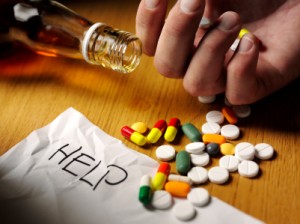The fitness industry has become a booming cash cow. Every day, new companies spring up promoting new supplements and new training regimes to make you “fit fast”. One of the most recent and popular trends to catch on in the supplement sphere is the use of creatine during weightlifting workouts. Creatine is an amino acid that has been billed as a supplement to be used in high intensity workout to increase energy production. Many swear by creatine, but it certainly has its skeptics as well. As someone who works out often I wondered is this something I should be using, or is it just another ploy to get my money out of my pocket and into those of the fitness industry tycoons?
The results of an examination could be as follows:
We could accept the Null Hypothesis, that taking creatine has effect on workout performance. If the Null Hypothesis is rejected, and we come to the conclusion that creatine supplementation is, indeed, causing an effect, this could take the form of two different Alternative Hypotheses. One, that creatine has benefits and increases performance in workouts, or two, that taking creatine actually has averse effects and decreases workout performance.
First, for those who do not know exactly what creatine and how it works, creatine is naturally occurring in meat and fish and is also produced by your liver. Creatine is used in the creation of ATP, the compound that muscles consume for energy. The idea behind creatine supplements claims that if you take creatine, your body creates more ATP and therefore more energy is available for your muscles during workouts, especially high intensity workouts, where your muscles are consuming large amounts of energy during the workout and in the brief periods of recovery.
In a 2003 meta-analysis of creatine studies, it was found that there was, in fact, a correlation between creatine and explosive energy during workouts. It was found that people who partook in weight training while taking creatine increased their max rep, or the maximum weight they could lift on any given exercise one time, by around 8-14% as compared to those in the study who did not take creatine. There was also a correlation between taking creatine and muscle mass gain, however the study contributed this not directly to the creatine, but as an indirect product of being able to lift more weight during workouts.
Another meta-analysis also supported these findings, as the results showed that out of 300 creatine related studies, 70% showed that creatine was correlated to an increase in that was statistically significant. This means that by taking creatine, the increase in strength was significant enough when compared to the control group that scientists concluded it was very unlikely to be due to chance alone. The same meta-analysis also showed that creatine is correlated with gains overall muscle mass.
These two pieces of evidence, being meta-analyses of hundreds of studies, present fairly strong evidence that the observed correlation between creatine and increased strength performance during workouts is causal. Of course, all conclusions could be subject to chance or other Alternative Hypotheses. The use of creatine is still a controversial topic that is under heavy investigation in an attempt to either further support its effectiveness or to find any previously undiscovered averse side-effects. While creatine use has by no means been proven to be effective, it is clear there is at least a strong correlation creatine use and the Alternative Hypothesis that it increases workout performance.
Sources:
http://www.menshealth.com/health/creatine-side-effects-what-it-is-what-it-does
http://europepmc.org/abstract/med/10731017
http://www.webmd.com/men/creatine#2
https://www.ncbi.nlm.nih.gov/pmc/articles/PMC3407788/#B8
https://www.ncbi.nlm.nih.gov/pubmed/12701815






















